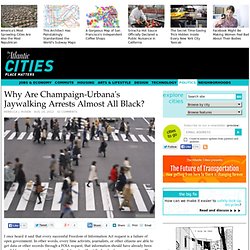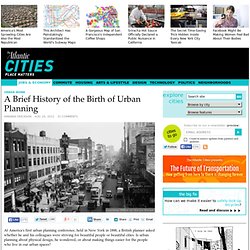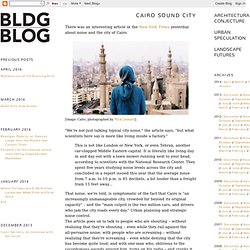

My Top 15 Urban Planning Websites #urbanplanning #NPPF « Decisions, Decisions, Decisions. One for planning students and interested amatuers.

You might be surprised that it includes no sites on the procedural or legal aspects of UK planning. The reason for that is that although planning students need a firm grounding it is more important to understand the basic concepts which act as a toolkit in any jurisdiction. Like doctors urban planners should be able to practice anywhere and understand the morphology and anatomy of their subject. Indeed British Planners are relatively lacking in the skills that would make them survive in this climate. How many British Planners for example would know the waste water requirements for a town for 20,000 people, or how much land for churches and mosques it would require?
So heres the (very personal) list 1. This wonderful site like many of the best sites has a manifesto ‘An Eco Compact City (ECC) is a city built and developed in balance with the natural environment. Urban Planning Blog - Thoughts on Design, Architecture & Urbanscape. Urban Omnibus. Urban Planning. Urbanism.org urban news [almost] daily. The Meaning of Emergent Urbanism, after A New Kind of Science. Old Urbanist. Mapping America — Census Bureau 2005-9 American Community Survey.
Citizen Powered Change. The BIG Map Blog - thousands of huge historical maps. The Atlantic Cities. Why Are Champaign-Urbana's Jaywalking Arrests Almost All Black? - Politics. I once heard it said that every successful Freedom of Information Act request is a failure of open government.

In other words, every time activists, journalists, or other citizens are able to get data or other records through a FOIA request, that information should have already been available, somehow, somewhere on the Internet, without the hassle of a request process. The thinking is that FOIA is an antiquated system, designed for a time when the government did not have a great way to make the information it holds public. Now doing so is (relatively) easy, but the FOIA system persists, putting the government in an essentially passive role as a resource. The results of such a request from VíveloHoy, a Spanish-language Chicago-based news site, show just how powerful government data can be. Recently, VíveloHoy submitted FOIA requests to the police departments of Champaign and Urbana, Illinois, looking for five years of arrest data broken down by race. VíveloHoy breaks down the numbers: A Brief History of the Birth of Urban Planning - Jobs & Economy. At America's first urban planning conference, held in New York in 1898, a British planner asked whether he and his colleagues were striving for beautiful people or beautiful cities.

Is urban planning about physical design, he wondered, or about making things easier for the people who live in our urban spaces? It was an essential question for the field, which really wasn't born until the early 20th century. Before then, there were three types of people thinking about how a city should look and function — architects, public health officials, and social workers.
Each group approached the question of city building very differently. The architects were focused on the city as a built environment, implementing ideas like L'Enfant's grand vision for Washington, D.C., and the New York City grid (set out by the Commissioner's Plan of 1811). These thinkers were brought together by the pressure cooker that was the Industrial Revolution.
In 1898, the question of the hour was horse manure. ReCities. The Dirt. Wooster Collective. Design Directory Results : urban planning. OLIN. MAS Studio. From Urban Art & 3D Graffiti to Abandoned Cities. حلقة نقاش رواية ميرامار لنجيب محفوظ. Urbanism.org urban news [almost] daily. Facebook. Cairobserver. Cairo Sound City. There was an interesting article in the New York Times yesterday about noise and the city of Cairo.

[Image: Cairo, photographed by Nick Leonard]. "We’re not just talking typical city noise," the article says, "but what scientists here say is more like living inside a factory. " This is not like London or New York, or even Tehran, another car-clogged Middle Eastern capital. It is literally like living day in and day out with a lawn mower running next to your head, according to scientists with the National Research Center. They spent five years studying noise levels across the city and concluded in a report issued this year that the average noise from 7 a.m. to 10 p.m. is 85 decibels, a bit louder than a freight train 15 feet away...That noise, we're told, is symptomatic of the fact that Cairo is "an increasingly unmanageable city, crowded far beyond its original capacity" – and the "main culprit is the two million cars, and drivers who jam the city roads every day.
" (Thanks, Nicky!)